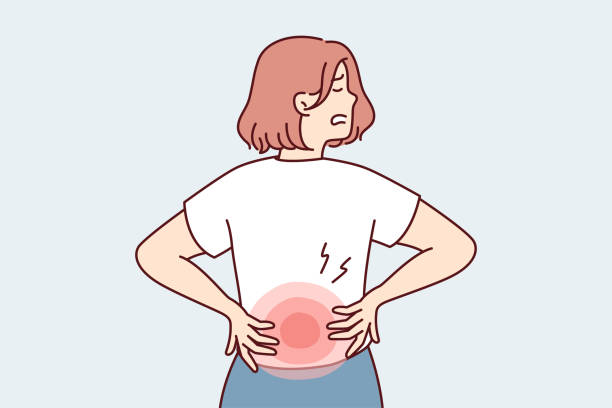Alternative Treatments
Unlock the Secrets to Holistic Treatment for Back Pain
Back pain is a common, often severe ailment that affects millions of individuals worldwide. While conventional treatments such as medicine and physical therapy can help some people, others choose alternative techniques that address the underlying source of their discomfort. Holistic treatment for back pain includes a variety of natural methods that aim to cure the body as a whole rather than just treating symptoms.
Different options of holistic treatment, which include acupuncture, chiropractic care, massage therapy, and herbal therapies, seek to treat back pain and promote long-term wellness. In this article, we’ll look at the principles underlying holistic back pain treatment and cover different approaches that people may implement into their self-care routines to relieve pain and improve their overall health.

Understanding Back Pain
Many people around the world suffer from back pain. It is a symptom that can be caused by a number of different things, including injury, disease, or disability. Back pain can be acute or persistent, with symptoms ranging from mild to severe.
Identifying the Cause
Identifying the origin of back pain is critical in selecting the best treatment. A variety of reasons can contribute to back discomfort, including muscular strain, ligament sprain, ruptured disk, osteoarthritis, and spinal stenosis. In other circumstances, the source of back discomfort may be unclear, necessitating additional diagnostic investigations.
The Role of the Spine and Muscles
The spine and muscles play an important role in back discomfort. The spine consists of 33 vertebrae that are divided by intervertebral disks. The disks function as shock absorbers, allowing the spine to move freely. The muscles of the back support the spine and allow for movement.
When the spine or muscles are injured or strained, back discomfort can develop. Acute back pain is typically triggered by a rapid accident, such as falling or lifting a heavy object. Chronic back pain, on the other hand, is frequently caused by repeated muscle strain or overuse, as well as a degenerative condition.
Finally, recognizing the origin of back pain is critical in deciding the best treatment. The spine and muscles play important roles in back pain, and damage or strain to these areas can cause acute or chronic pain.

Holistic Treatment Approaches
When it comes to treating back pain, a holistic treatment can be more effective than traditional medical therapies. A holistic treatment aims to treat the full person, including physical, emotional, and spiritual well-being. Here are some options of holistic treatment that can help relieve back pain:
Physical Therapy and Exercise
Physical therapy and exercise are crucial components of a comprehensive back pain treatment plan. A physical therapist can help you determine the source of your back discomfort and create an exercise plan to enhance your flexibility, posture, and balance. Exercise can also assist in strengthening your back muscles and lessen muscle tension, resulting in pain relief.
Alternative Therapies
Acupuncture, massage, and chiropractic adjustments are some of the alternative therapies that can help with back discomfort. Acupuncture is a traditional Chinese medicine method in which small needles are inserted into particular places on the body to promote energy flow and relieve pain. Massage can help relieve discomfort in muscles and joints, while chiropractic adjustments can straighten the spine and increase mobility.
Diet and Nutrition
Diet and nutrition can play an important role in controlling back pain. An anti-inflammatory diet rich in omega-3 fatty acids, such as nuts and fatty fish, can aid in the reduction of inflammation and discomfort. Calcium-rich foods, such as dairy products, can also help prevent osteoporosis, which causes back pain. Maintaining a healthy weight and obtaining adequate vitamin D can both assist with back discomfort.
Overall, holistic therapeutic approaches can be useful for managing back pain. Individuals who address the underlying causes of pain and focus on general well-being can find relief from back pain and enhance their quality of life.

Pain Management and Coping Strategies
Medication and Supplements
While medication and vitamins can assist manage back pain, they should not be regarded as the only option. Nonsteroidal anti-inflammatory medicines (NSAIDs), such as aspirin and ibuprofen, can help alleviate inflammation and pain. Muscle relaxants can also aid in reducing muscle spasms and pain. However, opioids should be used with caution due to the risk of addiction and negative effects.
Antidepressants may also be used to treat chronic pain since they can control mood and enhance sleep. CBD and capsaicin creams may also offer relief. However, it is critical to contact a healthcare practitioner before beginning any new drug or supplement.
Mindfulness and Relaxation Techniques
Back pain can be managed using both psychological and physiological treatments. Transcutaneous electrical nerve stimulation (TENS) and biofeedback therapy can both relieve pain and enhance function. Mindfulness-based stress reduction and progressive relaxation practices can also assist manage chronic pain.
Massage treatment and supplementary therapies like acupuncture may also help. Emotional support and counseling can also help manage chronic pain.
Pain management should be treated holistically, including both medical and non-medical approaches. Nonsurgical treatments, such as epidural steroid injections and physical therapy, should be investigated. It is critical to collaborate closely with a healthcare expert to create a personalized pain management plan that addresses both physical and psychological issues.

When to Consider Medical or Surgical Interventions
Non-surgical therapy for severe or chronic back pain may be ineffective. In such circumstances, medical or surgical procedures may be required. When deciding between non-surgical medical therapies and surgical options, consider the following factors.
Evaluating Non-Surgical Medical Treatments
Non-surgical medical treatments for back pain include medications, electrical nerve stimulation, injections, nerve pain, biofeedback, needles, chiropractic, research, heat, activities, TENS, pain medication, sitting, an accident, laser therapy, home remedies, medical treatment, heavy lifting, and bed rest.
Before seeking medical treatment, a person should try non-invasive methods including physical therapy, exercise, and stretching. If these therapies do not work, a person may pursue non-surgical medical options. Anti-inflammatory drugs, muscle relaxants, and pain relievers are among the possible treatments.
Understanding Surgical Options
Surgery is often used as a last option to alleviate back pain. It is typically indicated after other therapies have failed and the pain is severe and disabling. Several surgical alternatives exist for back discomfort, including:
- Discectomy is a surgical treatment that removes a herniated disc that is pushing on a nerve root or the spinal cord.
- Spinal fusion is a surgical treatment that involves joining two or more vertebrae together to support the spine.
- Artificial disc replacement is a surgical treatment that involves replacing a damaged or deteriorated disc with an artificial disc.
- Laminectomy is a surgical technique that involves removing a portion of the vertebral bone to relieve pressure on the spinal cord or nerve roots.
It is crucial to highlight that surgery is not always effective and can result in infection, bleeding, or nerve injury. Before deciding to undergo surgery, a person should consult with their doctor about the risks and advantages.
To summarize, non-surgical medical therapy should be tried before contemplating surgical options for back pain. A person should examine their options with their doctor and weigh the risks and advantages of each treatment.
Conclusion
Finally, holistic treatment for back pain provides a complete and tailored approach to addressing the root causes of discomfort while boosting general well-being. Acupuncture, chiropractic care, massage therapy, herbal therapies, and lifestyle changes can all help people manage their symptoms and promote their bodies’ natural healing processes. While holistic treatment is not a one-size-fits-all answer, it does provide useful tools for people looking for alternatives to traditional interventions or to supplement their current treatments. Embracing a holistic approach to back pain management empowers individuals to take control of their health and find relief from pain while cultivating greater balance and harmony in their lives.
Trusted Health, Wellness, and Medical advice for your well-being


